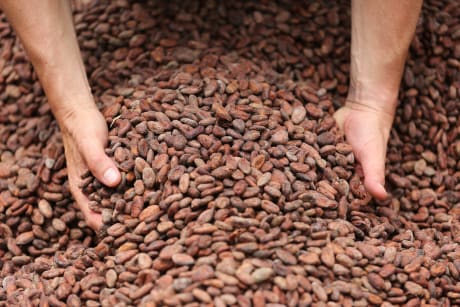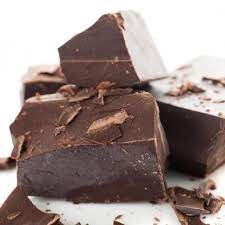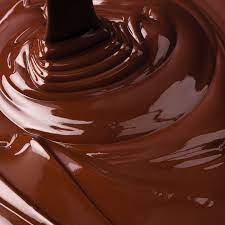
Cocoa Beans (Seeds)
Cocoa solids, which are a mixture of nonfat components, and cocoa butter, which is the fat, can be derived from the dried and fully fermented seed of Theobroma cacao, which is also referred to as cacao. The Amazon rainforest is the natural home of cocoa beans. They are the foundation of chocolate and other Mesoamerican dishes, such as the traditional Mexican beverage tejate.
Originating in the Amazon jungle, the cocoa tree was originally brought to Mesoamerica at least 5,300 years ago when it was brought in by the Mayo-Chinchipe culture of South America.Pre-Hispanic societies used cacao in spiritual rites and used its beans as a medium of exchange in Mesoamerica. A restricted geographic area supports the cocoa tree, with West Africa currently producing almost 81% of the global harvest. Forastero is the most commonly utilized of the three main varieties of cocoa plants: Criollo, Trinitario, and Forastero.
Although cocoa was once thought of as a culinary delight, some individuals now utilize it as medicinal. Asthma, bronchitis, diarrhea, infectious intestinal disorders, and lung congestion are all treated with cocoa seed. The seed coat is used as a general medicine, a tonic, and a treatment for diabetes, liver, bladder, and renal problems.

Cocoa Mass
Approximately 8% of the global cacao crop is composed of trinitario cacao. It is the result of a hybridization between Criollo and Forastero, fusing the vigorousness and high yield of the latter with some of the aromatic and sensory qualities of the former.
aromas on the Tasting: aromas of toast, caramel, honey, and dried fruit are detected.
Ingredients: Paste made with cocoa
There might be traces of nuts, soy, and milk in it.FREE OF GLUTEN.
Size of pack: 18x7x0.6 cm
Weight: 75g.
Preservation instructions: The product needs to be kept between 14° and 20°C in a cold, dry, and odorless place.

Cocoa Liquor
Pure cocoa bean in a liquid or semi-solid state is known as chocolate liquor, or cocoa liquor. It is made from fermented, dried, roasted, and separated from their skins cocoa bean nibs. After the nibs are ground into a paste, the liquor is melted and divided into cocoa solids and cocoa butter, or it can be cooled and shaped into raw chocolate blocks. It has about the same proportion of cocoa solids and cocoa butter as the nibs used to make it.[2]Its primary purpose is to make chocolate, frequently with the addition of cocoa butter.
The term “liquor” refers to the earlier definition of the word, which means “liquid” or “fluid,” rather than to an alcoholic product that has been distilled.
Chocolate liquor contains roughly 53 percent cocoa butter (fat), about 17 percent carbohydrates, 11 percent protein, 6 percent tannins, and 1.5 percent theobromine.
